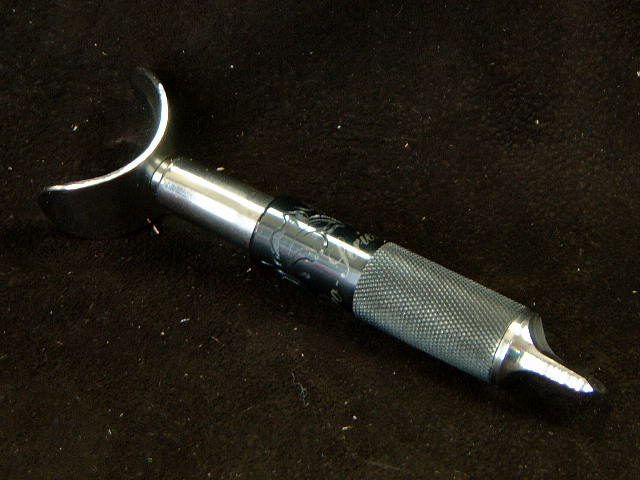-
Posts
2,656 -
Joined
-
Last visited
Content Type
Profiles
Forums
Events
Blogs
Gallery
Everything posted by Tugadude
-

Long Road Bike Glove Box?.JPG
Tugadude commented on RockyAussie's gallery image in Gallery- Our Leatherwork
-

Long Road Bike Glove Box?.JPG
Tugadude commented on RockyAussie's gallery image in Gallery- Our Leatherwork
-
Would like to see a pic if you have the time.
-
Lissette, we're happy to help but need details. What leather are you using? What dye? Water based or oil based? Also, photos help! good luck.
-
Your English is better than our Polish, so no need to apologize! Glad to have you in the forum, your work inspires.
-

Couple of watch straps
Tugadude replied to Mhicks's topic in Purses, Wallets, Belts and Miscellaneous Pocket Items
Nice job! You might want to take a soldering iron to the holes in the brown strap. I like the look it creates and it gets rid of the fuzz. YMMV. Try it on a scrap to see what you think. -

How Do I Sew A Single Stitch And End It For Watch Straps.
Tugadude replied to jinteddy7's topic in How Do I Do That?
I see you got no responses so I'll give it a go. No videos that I am aware of. This is assuming the leather is folded over where the stitching occurs. Punch the holes with a round awl. I would begin with two needles threaded on a length of thread and feed one needle through from one side to the other, in between the layers. Loop through twice and then fed back across, again, in between. Loop twice again and then stuff the thread in between again. Cut it and push it back inside. Should result in what you see on the straps, two double loops, one piece of thread and no loose ends. Not the most secure way to go but it is what it is. The one with metal strap keep can also be done with one length, four stitches is no harder, just do as above and then pass back across to the other side of the keep, do both sides and then cut and tuck. -
Nice job and the molding turned out very well!
-

Brookes bike saddle refurb - what do I do?
Tugadude replied to BalticZephyr's topic in How Do I Do That?
How did you remove the top? Obviously you had to remove the rivets, hopefully without damaging the leather. Be careful soaking the leather. If it loses its shape, how are you going to re-mold it? I don't recommend that at all. I would clean it with saddle soap and then possibly oxalic acid. It will need to be dyed and then finished. Brooks has its own proofhide formula, but any available wax-based finish should work. -

One Plain and One Basket Weave
Tugadude replied to Rohn's topic in Gun Holsters, Rifle Slings and Knife Sheathes
Holster pricing must be competitive because those prices seem cheap. The workmanship is spot-on and the design is so tight it seems like the holster just grew out of the pistol. Very, very nice. -

One Plain and One Basket Weave
Tugadude replied to Rohn's topic in Gun Holsters, Rifle Slings and Knife Sheathes
The owners will be thrilled. What percentage upcharge for the tooling, which is outstanding, BTW. -
Leather Wranglers handles look super comfy. Knip knives are said to be outstanding too.
-
I suppose we've all made our points. Now it is up to the original poster to decide. Either way, the videos Martyn attached are a must watch. Even if you choose one method over the other, you will learn about both. Good luck and feel free to post examples of your work as you progress. We'll look forward to helping if we can.
-
Live and learn. I think all of us have done similar so welcome to the club!
-
Another thing to try is a wheel-style cutter. I use mine a lot.
-
Probably a longshot, but look on Craigslist. I bought a nice assortment of stamps that way and it had a nice case, marble slab, etc. guy was getting out of leatherworking.
-
Post a pic if you can
-
I wouldn't worry too much about it. The strength of the connection depends upon a number of factors including space between holes (or slits), size of hole, strength of thread, angle of stitch, etc. Add to that how close to the edge the row of stitching is and the tensile strength of the leather itself. What I believe you have here is several passionate, determined folk, who have opinions on the matter. We share those opinions and you can either agree, disagree or wait and try yourself and then decide. To those who don't use stitching irons or chisels, how can they say they are no good? I do both methods and will say that they definitely have their place. I can put out a good-looking stitch either way but the chisel is faster (if that matters) and it is easier For Me to keep the backside looking straight. I bring up Nigel Armitage because most of us would agree he is a craftsman. He appears to have been traditionally trained and is expert, to me, in his work. He was very reticent to embrace the stitching irons. But he didn't pass judgment, he actually tried them and found them decent and helpful in some situations. I encourage you to watch the videos Martyn attached. I understand those who don't like the notion of pounding holes through leather. They believe it is inelegant. Perhaps like doing a painting with a can of spray paint. But what about an air brush? Bottom line, different strokes for different folks. BTW, the holes made by stitching irons DO close up some if you let the leather sit. And as I said previously, it has never been a problem for me. Learn both methods and I think you'll be better for it. Least then you can say you tried and didn't reject one or the other without experience.
-
I use both methods described above. Lately, most with a chisel. I have no problem with holes not closing up, period. I always tap my stitching down with a smooth-faced hammer and the thread completely fills the holes. Big fan of chisels here and Nigel Armitage, one of the best saddle stitchers I've seen, is too. I'm not going to argue.
-
Welcome to the wacky world of leathercraft! Glad you want to learn. First, a picture is worth 1,000 words, so show us and then tell us. Your idea of thick leather might not be very thick to us. There are a bunch of things to comment on. First, the home made awl. We need to know the size of the blade. Then there is the needle size and thread size. What, specifically did you use? Then the question of single or double needle stitching. True saddle stitching uses two needles. Nigel Armitage shows how to do it properly on his Youtube videos. If you struggle with keeping the backside holes straight it is because you aren't keeping the awl straight. If it ism't sharp, you have to push too hard and it gets messy. Buy a good awl or sharpen yours. Or better still, invest in some stitching chisels. Awl work is a learned skill. Nigel covers it well, but practice is necessary in order to show improvement. Some leathers are so thick and stiff that it is advisable to punch both layers first, but we need to know what you are using. Much more to say, but that is a start. BTW, some members here use a drill press, placing the awl blade in the chuck and letting the machine help. Not drilling, just the up/down motion, punching the hole straight. what are you using for spacing your holes?
-
-
http://home.earthlink.net/~kenhale/proseries/proser.html check out his facebook page too
-

New guy to forum
Tugadude replied to Christopher's topic in Purses, Wallets, Belts and Miscellaneous Pocket Items
Looks good, and welcome!




